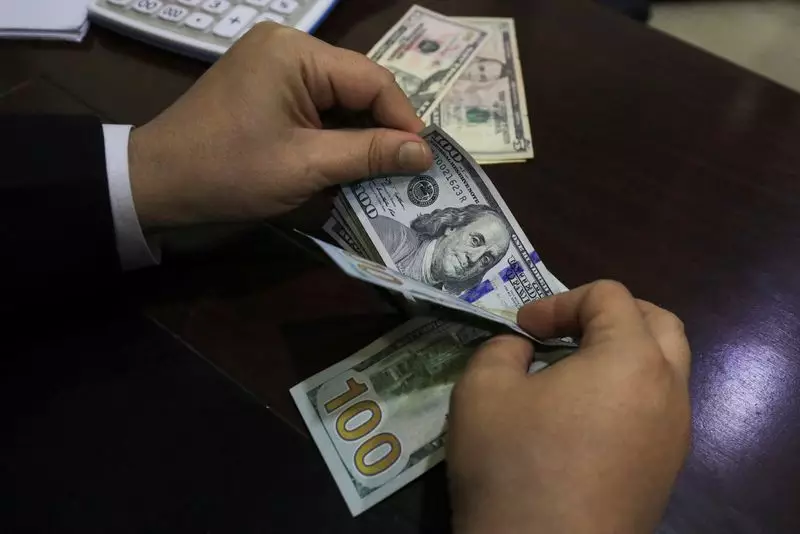The currency market is often a reflection of broader economic sentiments, rendered even more volatile by the undercurrents of political developments. Recently, the U.S. dollar has exhibited significant fluctuations, closely tied to President-elect Donald Trump’s proposed tariff policies, which have raised questions about their actual implementation and implications. This uncertainty has led to a pivotal moment in the currency’s performance, particularly against major counterparts like the euro and the British pound.
On a typical trading day, nuances in policy announcements can influence currency strength, and the U.S. dollar has been no exception. Recent reports suggesting that Trump’s administration might scale back on tariff implementation by targeting only sectors deemed vital for national security have precipitated a marked shift in dollar valuation. The dollar index, a vital measure of the currency against a basket of its rivals, notably dipped to its lowest point since December 30 before rebounding. This reaction indicates how sensitive the market is to potential tariff policies.
Historically, anticipated policies that promise fiscal stimulus, coupled with reduced regulation and heightened tariffs, have generated optimism around enhanced economic growth. This was evident when the dollar rose sharply to 109.58 at the beginning of January, fueled by expectations surrounding Trump’s economic agenda. However, this trajectory came to a halt as traders reassessed the likelihood of such policies being enacted as originally proposed. Analysts have pointed out that Trump’s initial tariff proposals seemed excessively robust, leading traders to adjust their positions as new information emerged.
Market analyst Chris Weston highlighted that Trump’s universal tariffs were likely to be moderated, a perspective echoed by the market’s movements. Following a denial from Trump about the specifics reported by the Washington Post, the dollar managed to regain some positions, but the overall sentiment remained cautious. The interplay between political publicity and market interpretation plays a crucial role in determining currency trends.
For currencies like the euro and the British pound, which are directly impacted by U.S. trade policies, even minor adjustments in tariff strategies can have outsized effects. As the euro was recently trading slightly down against the dollar, the evidence suggested that traders were consolidating their forecasts in reaction to the evolving political narrative. The potential implications for transatlantic relationships only add to this complexity as Europe has often been a focal point of America’s tariff threats.
Further layers of complexity enter the discussion with the dynamics surrounding other currencies. For instance, the dollar rose against the Japanese yen, supported by higher U.S. Treasury yields, reflecting a broader market sentiment regarding U.S. economic vitality compared to other major economies. This differential is noteworthy, especially in the context of Prime Minister Justin Trudeau’s announcement regarding his impending resignation from the Liberal leadership, which has led to speculation about the future of Canada’s economic policy and its impact on the Canadian dollar.
This intricate dance of currency valuation is also mirrored in the burgeoning realm of cryptocurrencies. Even with the complexities surrounding traditional currencies, Bitcoin recently saw an upward swing, hinting at stronger market interest amidst the ongoing geopolitical and economic shifts. As it traded at its peak levels since December, this indicates that investors might be diversifying their portfolios in light of uncertainties in the traditional financial landscape.
As uncertainty continues to loom over the U.S. economic policies, the dollar’s trajectory appears closely tied to both domestic political maneuvers and international market receptivity. The upcoming months will likely reveal whether the perceived moderation in Trump’s tariff policies will stabilize the dollar or if alternate factors will compel more drastic market realignments.
The U.S. dollar stands as a barometer not merely of American economic strength but also of global economic health, shaped by an evolving political landscape. Investors must remain vigilant as sentiment shifts, for the currency market is intrinsically linked to the narratives crafted by policymakers both at home and abroad. The future of the dollar hinges on these interwoven narratives, making it a fascinating subject for ongoing observation and analysis.

